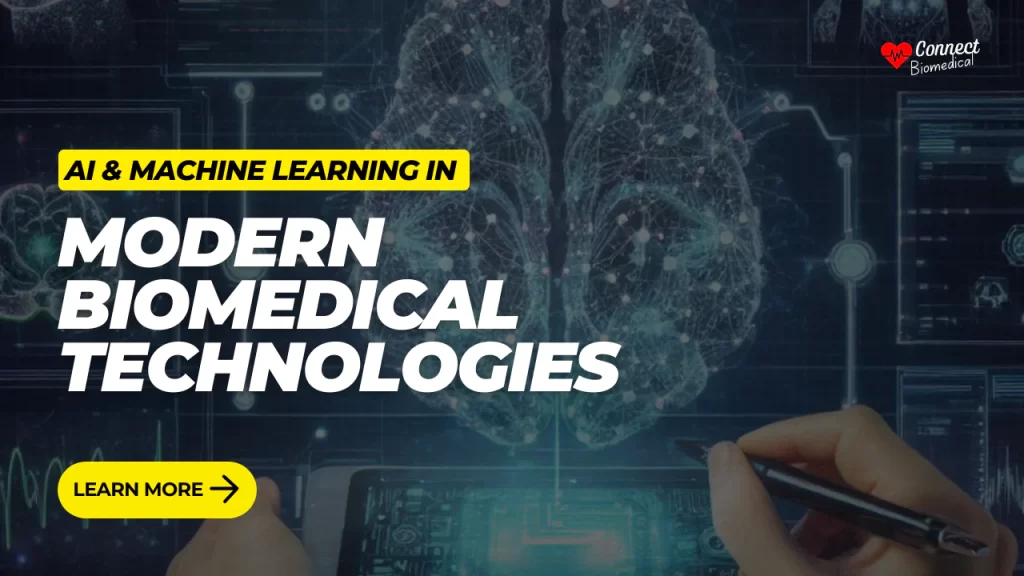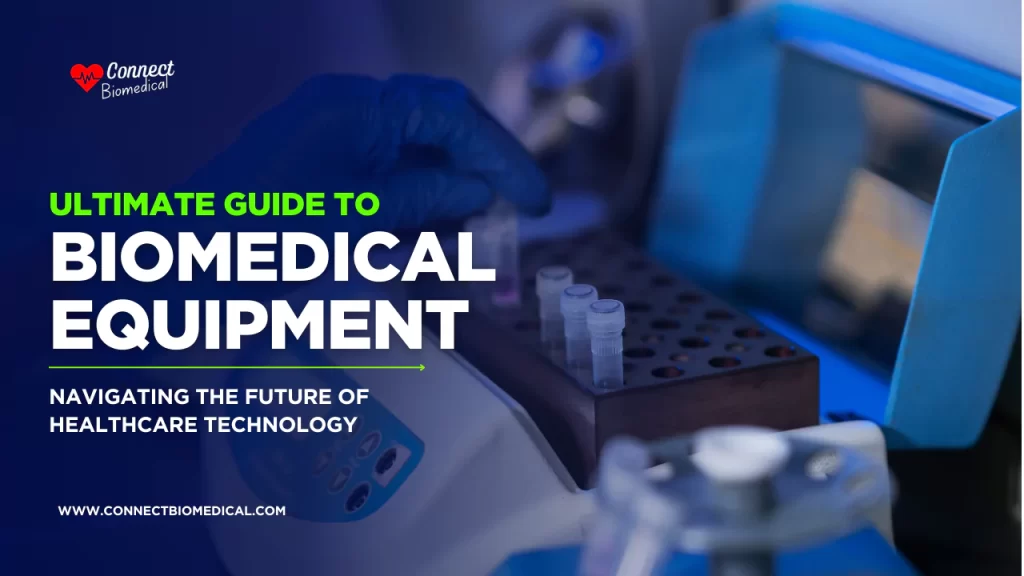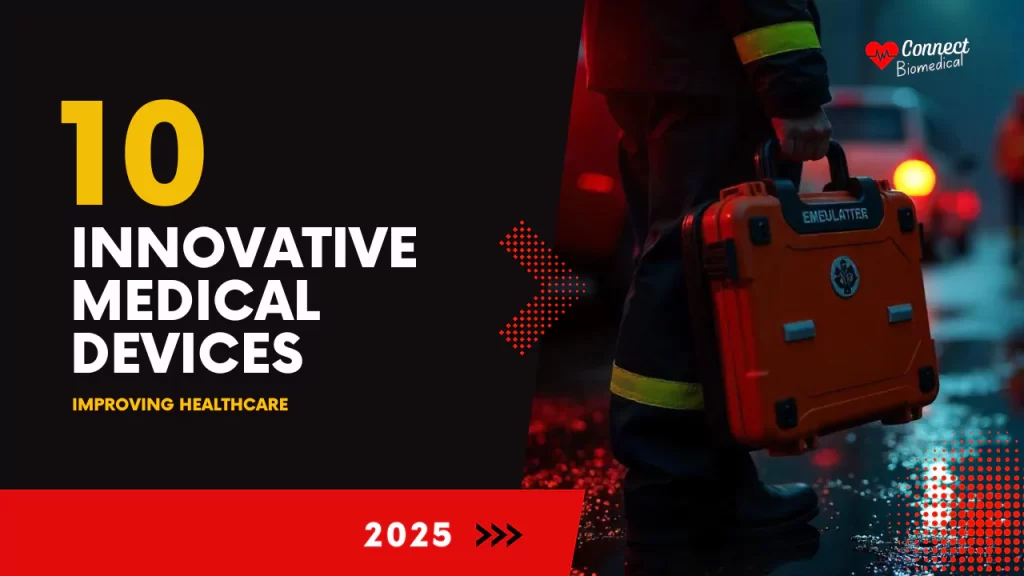Written by Dr. Antti Rintanen, MD, MSc (Engineering)
Biomedical technology has made tremendous strides over the past few decades, reshaping how healthcare is delivered across disciplines. Devices ranging from wearable monitors to robotic surgical systems are no longer futuristic concepts but everyday tools enhancing patient care. Yet, as with any transformative innovation, the true benefits of biomedical devices are only realized when they are thoughtfully integrated into clinical practice.
In this article, we explore the key factors that influence successful integration, the benefits for patients and providers, challenges to consider, and a glimpse into the future of biomedical device adoption.
The Evolution of Biomedical Devices in Healthcare
The history of biomedical devices is a story of persistent innovation. Early milestones, such as the invention of the electrocardiogram (ECG) and artificial pacemakers, set the stage for a field that now encompasses advanced imaging equipment, point-of-care diagnostic tools, and implantable sensors.
Today, biomedical devices are not only more sophisticated but also more accessible. Portable ultrasound machines, wearable continuous glucose monitors, and AI-powered diagnostic platforms are becoming common features in clinics and hospitals worldwide. This democratization of technology holds immense promise for expanding healthcare access, improving diagnostic accuracy, and enhancing patient outcomes [1].
However, for healthcare systems to fully leverage these innovations, a deliberate and systematic approach to integration is essential.
The Importance of Thoughtful Integration
Introducing a new device into clinical workflows involves much more than purchasing equipment. Without careful planning, even the most advanced technology can disrupt operations, create inefficiencies, or lead to clinician frustration.
Successful integration rests on several pillars:
- Clinical Alignment: Devices must address genuine clinical needs and support existing standards of care.
- Ease of Use: User-friendly interfaces reduce the learning curve and promote adoption among busy healthcare providers.
- Training and Education: Clinicians must be trained not only on how to operate devices but also on how to interpret the data they generate.
- Patient Engagement: Clear communication with patients about how biomedical devices support their care fosters trust and cooperation.
- Workflow Integration: Devices should fit seamlessly into daily routines rather than adding unnecessary complexity.
Organizations that recognize these elements are better positioned to incorporate biomedical devices in ways that enhance, rather than complicate, clinical practice.
Practical Considerations for Successful Adoption
Healthcare institutions considering the adoption of new biomedical devices should carefully evaluate several factors:
1. Clinical Relevance
Before adopting a device, it is crucial to assess whether it addresses a meaningful clinical need. Devices that enhance diagnostic precision, improve therapeutic outcomes, or increase patient monitoring capabilities can offer significant value [1].
2. Regulatory Compliance
Biomedical devices must meet all necessary regulatory standards to ensure patient safety. In the European Union, CE marking indicates conformity with health, safety, and environmental protection standards. In the United States, the Food and Drug Administration (FDA) regulates medical devices through a rigorous approval process. Adhering to these standards protects patients and mitigates institutional risk.
3. Interoperability and Data Integration
The ability of devices to communicate with existing electronic health records (EHR) systems is vital. Seamless data integration prevents fragmented information and supports comprehensive patient management. When evaluating devices, organizations should prioritize solutions that offer standardized data formats and robust cybersecurity measures to safeguard patient information [3].
4. Financial Considerations
Adoption costs extend beyond initial purchase prices. Institutions must factor in maintenance, software updates, consumables, training, and potential device downtime. Conducting a thorough cost-benefit analysis can help determine the long-term sustainability of a biomedical device within the clinical setting.
5. Training and Support
Vendors should provide comprehensive training resources and ongoing technical support. Additionally, establishing internal “super-users” or champions among clinical staff can help facilitate wider adoption and troubleshooting.
Benefits of Integrating Biomedical Devices
Thoughtfully integrated biomedical devices offer substantial benefits to both patients and healthcare providers.
Enhanced Diagnostic and Monitoring Capabilities
Biomedical devices have transformed diagnostics by enabling real-time, high-resolution, and often non-invasive assessments [1]. Portable imaging tools, for example, allow clinicians to perform bedside evaluations, expediting diagnosis and treatment initiation.
Continuous monitoring devices, such as wearable heart rate or glucose monitors, provide clinicians with longitudinal data, offering insights that static measurements cannot capture.
Personalized Patient Care
Biomedical devices contribute to the growing trend of personalized medicine. Continuous data streams enable healthcare providers to tailor treatments based on individual patient responses, adjusting interventions proactively to optimize outcomes [2].
For example, wearable activity trackers and rehabilitation devices provide feedback that can be used to customize physical therapy regimens, enhancing recovery while minimizing the risk of re-injury.
Increased Patient Engagement
Patients equipped with user-friendly monitoring devices are more likely to engage in self-care and adhere to treatment plans. Empowering patients with tools to track their own health metrics promotes a sense of ownership over their wellbeing and fosters collaborative doctor-patient relationships.
Improved Clinical Efficiency
Automated data collection and analysis reduce administrative burdens on healthcare providers [3]. This efficiency not only saves time but also allows clinicians to focus more on direct patient care rather than paperwork or manual data entry.
Moreover, early detection of complications through continuous monitoring can prevent hospital readmissions and reduce healthcare costs.
Challenges to Address
Despite their advantages, integrating biomedical devices presents challenges that must be proactively managed:
Data Privacy and Security
As devices increasingly connect to networks and cloud systems, protecting patient data becomes paramount. Institutions must ensure that devices adhere to cybersecurity best practices, including encryption, authentication protocols, and compliance with privacy regulations [4].
Workflow Disruption
Poorly integrated devices can create inefficiencies if they require cumbersome data entry, frequent recalibration, or complex interpretation. Piloting new devices in small clinical teams before widespread rollout can help identify and resolve workflow issues early.
Resistance to Change
Healthcare providers may be skeptical of new technologies, particularly if they perceive them as threatening clinical autonomy or adding to their workload. Clear communication about the benefits, hands-on training, and incorporating clinician feedback into implementation strategies can mitigate resistance.
Equity of Access
Ensuring that biomedical device innovations are accessible to diverse patient populations, including those in rural or underserved communities, is critical. Telemedicine-compatible devices and portable diagnostic tools have particular promise in bridging these gaps but require dedicated policy support and funding.
The Future of Biomedical Device Integration
Looking ahead, the integration of biomedical devices will continue to evolve in tandem with advances in artificial intelligence (AI), machine learning, and big data analytics [5].
AI-enhanced devices will not only collect information but also analyze trends, flag anomalies, and suggest clinical interventions. For instance, AI algorithms embedded in imaging devices are already assisting radiologists in detecting subtle pathologies with higher sensitivity.
Interoperability will also improve as standardized communication protocols become more widespread, enabling seamless sharing of device data across healthcare ecosystems.
Finally, patient-centric design will drive innovation, with devices becoming more intuitive, personalized, and wearable, blurring the lines between medical tools and consumer electronics.
Conclusion
The integration of biomedical devices into clinical practice offers unparalleled opportunities to enhance diagnostic precision, personalize treatments, engage patients, and improve clinical efficiency. However, realizing these benefits requires a strategic, patient-centered approach that considers clinical relevance, usability, data integration, regulatory compliance, and financial sustainability.
By thoughtfully incorporating biomedical devices into healthcare settings, providers can not only keep pace with technological advancements but also fundamentally transform the patient experience, advancing the quality, accessibility, and effectiveness of modern medicine.
About the Author
Dr. Antti Rintanen, MD, MSc (Engineering), is a licensed medical doctor from Finland with a Master’s degree in Engineering. He is the founder of The Internet Doctor, a platform dedicated to translating complex medical knowledge into practical advice for healthcare professionals and the general public. With expertise spanning clinical medicine, biomedical technology, and systems engineering, Dr. Rintanen is passionate about improving healthcare through innovation, education, and the thoughtful application of new technologies.
Bibliography
[1] Piwek, L., Ellis, D. A., Andrews, S., & Joinson, A. (2016). The Rise of Consumer Health Wearables: Promises and Barriers. PLOS Medicine, 13(2), e1001953. https://journals.plos.org
[2] Nashruddin, S. N. A. M., Salleh, F. H. M., Yunus, R. M., & Zaman, H. B. (2024). Artificial intelligence-powered electrochemical sensor: Recent advances, challenges, and prospects. Heliyon, 10(18), e37964. https://pubmed.ncbi.nlm.nih.gov
[3] Buntin, M. B., Burke, M. F., Hoaglin, M. C., & Blumenthal, D. (2011). The Benefits Of Health Information Technology: A Review Of The Recent Literature Shows Predominantly Positive Results. Health Affairs, 30(3), 464–471. https://pubmed.ncbi.nlm.nih.gov
[4] Lu, L., Zhang, J., Xie, Y., Gao, F., Xu, S., Wu, X., & Ye, Z. (2020). Wearable Health Devices in Health Care: Narrative Systematic Review. JMIR mHealth and uHealth, 8(11), e18907. https://mhealth.jmir.org
[5] Topol, E. J. (2019). High-performance medicine: the convergence of human and artificial intelligence. Nature Medicine, 25(1), 44–56. https://www.nature.com





